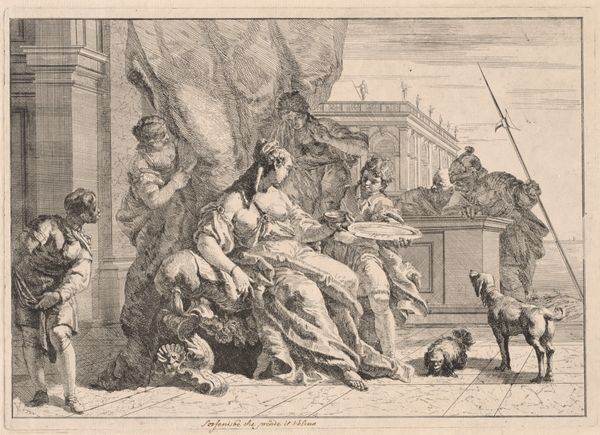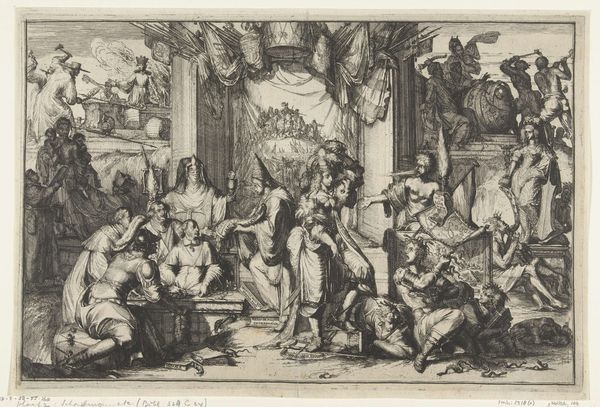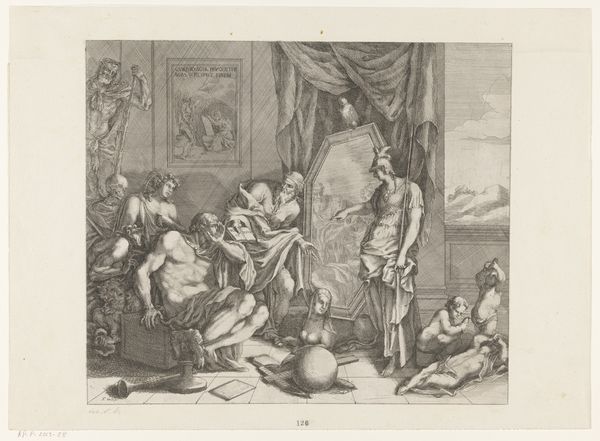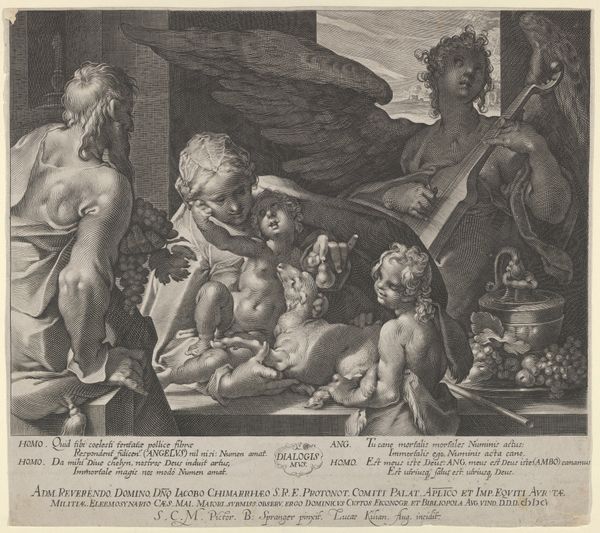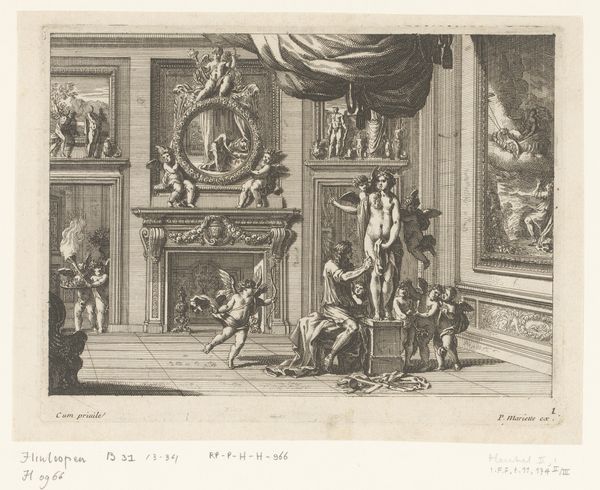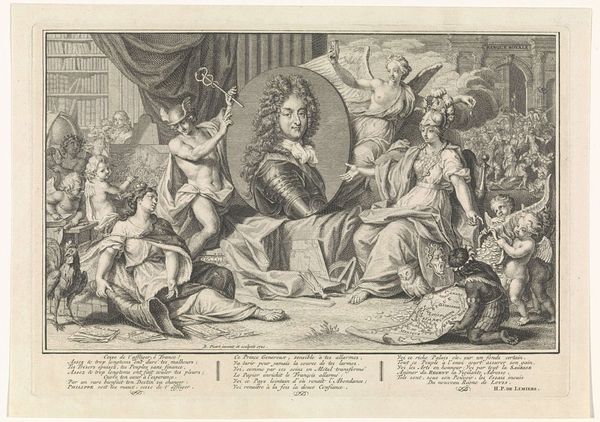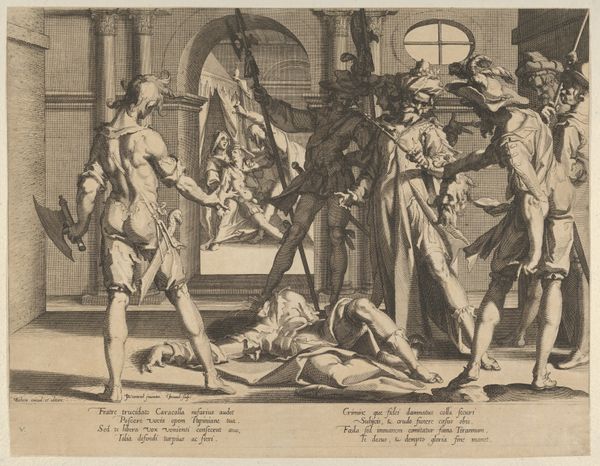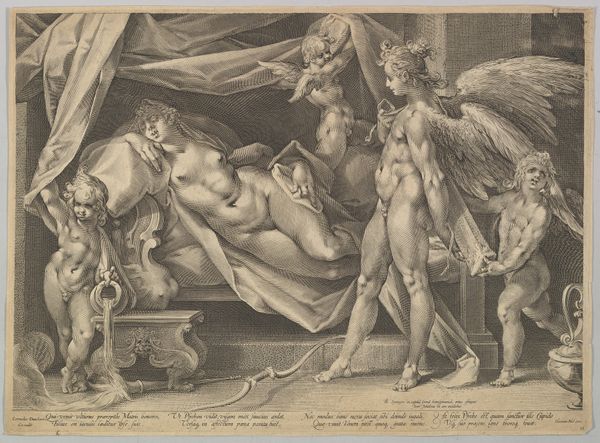
Mercury Entering Herse's Room after Changing Agraulos to Stone 1590
0:00
0:00
print, engraving
#
allegory
#
baroque
# print
#
mannerism
#
figuration
#
form
#
line
#
history-painting
#
nude
#
engraving
Dimensions: plate: 17.8 x 25.6 cm (7 x 10 1/16 in.) sheet: 18.4 x 26.1 cm (7 1/4 x 10 1/4 in.)
Copyright: National Gallery of Art: CC0 1.0
Curator: This is Hendrick Goltzius's engraving, "Mercury Entering Herse's Room after Changing Agraulos to Stone," created around 1590. It depicts a scene from Ovid's Metamorphoses. Editor: My first impression is that this piece is filled with tension and suppressed eroticism. The tight, swirling lines create a visually busy surface, but the scene is staged very intimately. There's a contrast between the public and private realms being explored here. Curator: Exactly. Goltzius masterfully uses the engraving technique to create a sense of depth and texture. Notice the way he varies the line weight to suggest light and shadow, creating the illusion of three-dimensionality, particularly in the rendering of the figures' bodies. This highlights a specific approach to the figure and form prominent in Mannerism, and later embraced by the Baroque. Editor: And that dynamic composition reinforces the drama of the narrative. Mercury, identified by his caduceus, seems to stride forcefully into the scene, his cape billowing, disturbing the serenity of Herse reclining in her chamber. You see his disruptive influence even extending into the scene reflected in the mirror. Curator: And consider the underlying symbolism. Mercury, the messenger god, represents communication, but also trickery and swift change. The story itself revolves around themes of jealousy and transformation; Agraulos is punished for her envy and turned to stone. Editor: The dog, seemingly oblivious to the divine intervention unfolding, and the snakes also add a subtle layer of menace and deception. This idea of power dynamics and consequences of disobedience is compelling. The way Agraulos's transformation is presented in the mirror implicates her actions as creating that grotesque image herself, suggesting internal struggle rather than an external curse. Curator: I'd agree with that idea; that sense of reflection speaks directly to human weakness and moral lessons encoded within mythological tales. The emphasis on such characters serves to impart cultural values and warnings through familiar and popular imagery. Editor: It reminds us that art, even when seemingly celebrating classical tales, often serves as a mirror to the concerns and anxieties of its own time. It also points to this fascination, perhaps an unease, around female bodies and transgression that runs throughout much of Western art. Curator: Examining how this iconography reverberates in various cultural spheres reveals complex emotional and intellectual resonances within both period art and beyond. Editor: Right, by looking beyond a simple appreciation for its aesthetics and craft, we’ve exposed just some of the powerful messages this work carries within it.
Comments
No comments
Be the first to comment and join the conversation on the ultimate creative platform.
